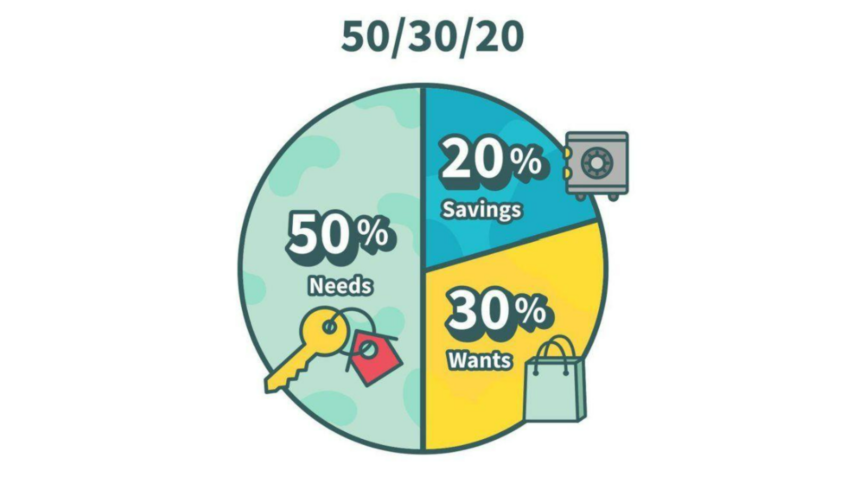The 50-20-30 budget rule is a popular and straightforward framework designed to help individuals allocate their income effectively, providing a balanced approach to managing expenses, savings, and discretionary spending. Let’s delve into the components of this budget rule and explore whether it makes sense for you.
1. Understanding the Components:
- 50% for Needs: Allocate 50% of your income to cover essential needs. This includes housing, utilities, groceries, transportation, and other necessities.
- 20% for Savings: Dedicate 20% of your income to savings and financial goals. This category encompasses contributions to emergency funds, retirement accounts, and other savings objectives.
- 30% for Wants: Reserve 30% of your income for discretionary spending. This includes non-essential expenses like dining out, entertainment, hobbies, and other lifestyle choices.
2. Advantages of the 50-20-30 Rule:
- Simplicity: The rule is simple and easy to implement. It provides a clear framework for dividing income, making budgeting more accessible for individuals who may be new to financial planning.
- Balance: By allocating specific percentages to different categories, the rule promotes a balanced financial approach. It ensures that essential needs are met, savings are prioritized, and there’s room for discretionary spending.
3. Does It Make Sense for You?
- Suitability: The 50-20-30 rule may be suitable for individuals with relatively stable income and standard living expenses. It offers a guideline that can be adjusted based on individual circumstances.
- Flexibility: While the rule provides a general structure, it’s essential to recognize its flexibility. Personalize the percentages based on your unique financial goals, priorities, and lifestyle.
- Emergency Fund Considerations: The rule incorporates savings, but it’s crucial to assess whether the allocated 20% is sufficient for your emergency fund and long-term goals. Adjustments may be necessary based on individual financial objectives.
4. Challenges and Considerations:
- Regional Variations: Living costs vary regionally. The 50-20-30 rule might need adjustments based on the cost of living in your area.
- Income Fluctuations: For those with irregular or variable income, strict adherence to percentages may be challenging. In such cases, a more flexible approach to budgeting might be necessary.
5. Building Financial Awareness:
- Tracking Expenses: Implementing the 50-20-30 rule encourages individuals to track their expenses and gain a deeper understanding of their spending habits. This awareness is crucial for making informed financial decisions.
6. Adjusting for Life Changes:
- Life Stage Considerations: Life changes, such as getting married, having children, or buying a home, may necessitate adjustments to the budget percentages. Flexibility in adapting to evolving circumstances is key.
Conclusion: A Starting Point for Financial Wellness:
The 50-20-30 budget rule serves as a practical starting point for individuals seeking a structured approach to managing their finances. While it provides a solid foundation, it’s essential to view it as a guideline rather than a rigid rule. Personalizing the percentages based on your specific situation and remaining adaptable to life changes ensures that your budget aligns with your unique financial journey.

